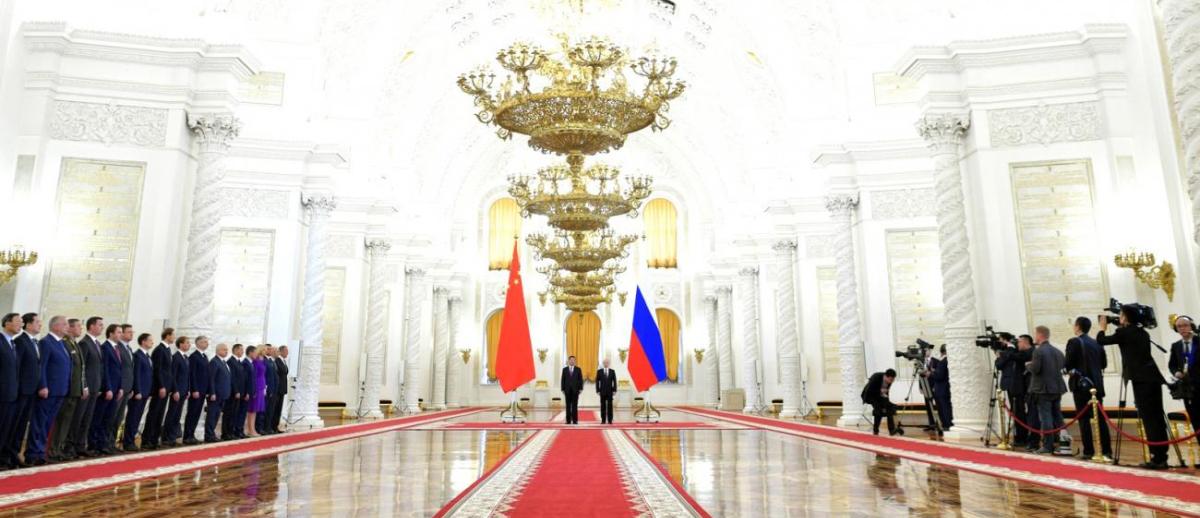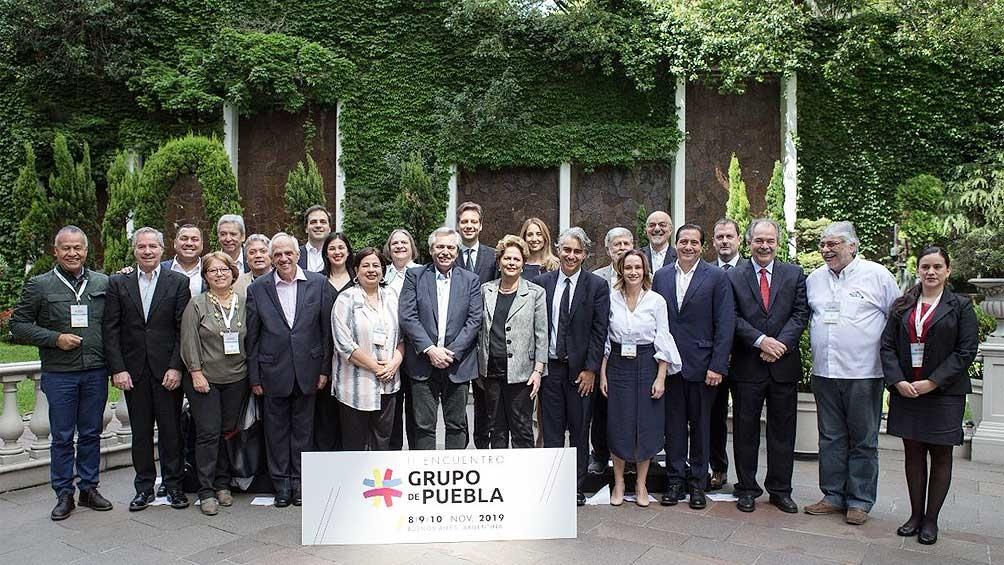The Tripod and the Scales – Geopolitical Challenges for Brazil and the Developing World
archive


Russian President Vladimir Putin and his Chinese counterpart Xi Jinping at the Kremlin in Moscow on June 5, 2019. (Photo: AFP)
The Tripod and the Scales – Geopolitical Challenges for Brazil and the Developing World
In history, some mistakes are as famous as successes.
A momentous example from a conceptual point of view was the misperception of the North-American philosopher/sociologist Francis Fukuyama, who, mesmerized by the fall of the Berlin Wall and the end of “real socialism,” wrote his famous piece about the “End of History.” History itself, much more effectively than the abundant criticism Fukuyama has received ever since (including an article I published in Contexto Internacional1), would demonstrate that Fukuyama’s epistemological breakthrough was merely an optical illusion. Not only would Fukuyama’s utopic capitalism soon suffer one of its most severe crises, but its democratic and liberal aspects would be replaced by the almost absolute domination of financial capital in countries of the periphery.
Nevertheless, as is the case with many other historical errors, the great mistake of the North-American “pop thinker” had the merit of calling attention to an important rupture in the International System that was in place since the end of the Second World War, a system essentially structured around two antagonistic powers standing for opposing ways to organize society. If the fall of the Berlin Wall and the changes that followed in Eastern Europe in its aftermath—mainly the unbelievable dissolution of the Soviet Union2—did not mean the end of History, they did signal a fundamental transformation in the way the International Order was organized, not only in normative terms, but, especially, in terms of power.
After the end of the bipolar world of the Cold War, a short period (indeed very short in historical terms) ensued, in which North American hegemony was or seemed to be a fait incontounable, an unassailable reality to which every other nation had to adapt. It was the time of concepts such as the “only remaining superpower” or “assertive multilateralism,” which, in effect, meant submission of International Organizations, especially the United Nations Security Council, to Washington’s designs. But it did not take too long before fractures in this unipolar system appeared. These derived, at least in part, from the arrogant way in which the “hyperpower” or hyperpuissance, in the apt expression of Hubert Védrine,3 acted to impose its goals, with little or no consideration for the views and interests of other nations, including some relatively powerful ones, such as the other four permanent members of the Security Council.
Beyond Uni- and Bipolarity
The underlying postulates of this period of “consented unipolarity” started to be challenged not only by the traditional rivals (Russia and China), but also by European powers, such as France and Germany. The latter, although not a permanent member of the UN Security Council, enjoyed growing influence in European and global affairs. The vision of a multipolar world order started to take shape and even less developed countries, such as Brazil and India, were considered as actors with a reasonable degree of influence on the global stage.4 The concept of multipolarity prospered and gained unexpected adepts. It was explicitly or implicitly accepted by the President of the United Sates himself who, in one specific situation (Libya) with broader implications, suggested that the US should “lead from behind.”5
It is important to note that, unlike the bipolarity of the Cold War and the short period of unipolar domination, the ideological element was notably absent in the conception of a multipolar order. More than the preference for a form of government or social organization, multipolarity reflected the notion of equilibrium or “balance” of power (hence the “scales” metaphor), in a manner not entirely dissimilar of the central idea that defined European politics since the Peace of Westphalia up to the Great Wars of the 20th Century (with some interruptions). Even though, in principle, it expresses a view of reality as “it is” and not necessarily as “it should be,” multipolarity carries with it, up to a point, a prescriptive or, if one prefers, an idealist content. It goes beyond the realm of sein and reaches the domain of sollen. For those who supported multipolarity as a policy, only a reasonably balanced distribution of power would promote effective multilateralism, in which the rule of law would prevail.
Looking at today’s world, there are reasons to doubt that multipolarity, as dreamt by politicians and diplomats in capitals as diverse as Moscow, Paris, Delhi and Brasilia—and, at some point, admitted in Washington—may indeed prevail. From a bird’s eye view of the international scene, what one sees, in theory and practice, is the rising of a new bipolarity, represented by the two most economically powerful nations: the United States, supposedly in decline, and the undoubtedly rising China.6 The moment of “il sorpasso”—an expression used a few decades ago to indicate the “overcoming” of Britain by Italy in terms of GDP (which by the way never happened)—will tend to provoke shocks and risks not to be neglected. But it is not by chance that in recent times it became fashionable among International Relations scholars to debate the applicability of the “Thucydides’ trap,” named after the great historian of the Peloponnese War who famously asserted that “it was the rise of Athens and the fear that this instilled in Sparta that made war inevitable.”
For those who supported multipolarity as a policy, only a reasonably balanced distribution of power would promote effective multilateralism, in which the rule of law would prevail.
Every historical comparison is, by its very nature, imperfect. Here, two observations should be made. The first concerns the very notion of “bipolarity” as an adequate definition of the system being gestated. Even though China and the United States are undoubtedly the two great centers of economic power and the conflict between them (still very far from a war) has already started, there are other aspects of present day reality that differentiate it from “classic bipolarity” (if we can refer to the period of the Cold War in that way). Prominent among them, from a political and strategic point of view, is the military might of Russia. Despite its relative decline in comparison with the former Soviet Union, Russia can still display a degree of military capability that makes any analysis that discounts its role the world order simply preposterous. Even though Moscow seems to have chosen to align itself with Beijing economically, it is not in any way clear how Russia will use—or threaten to use—its formidable military might in case of a severe crisis, especially one that may be seen as a “security risk” by the decision makers in Moscow. Present tendencies notwithstanding, it is in my view far from certain that Russia has given up its superpower status and will bow to a new hegemon in Eurasia. In the recent past, in the disputes with Georgia and, more notably, in relation to Ukraine and the action over Crimea, Moscow has shown that it will not allow an eastward expansion of NATO beyond its present limits.7 All these facts point to the conclusion that the present power structure looks more like a “tripod” than “scales with two plates,” with Russia standing close—if not exactly equal—to the other two pillars, China and the United States.
Beyond the Tripod
This summary description of the present distribution of world power is far from complete. Europe, for one, despite the strain caused by Brexit and by severe ideological dissention within the Union, will remain an important actor with significant economic weight. In diplomacy, Europeans will remain a source of creative initiatives in the search for solutions for global problems such as climate change and multilateral trade. Even though not part of a “strategic tripod,” Europe cannot be ignored in the analysis of a new world order. Developing nations, especially those with large populations, territorial mass, or natural resources, should face these new realities without simplifications or hasty opinions. The statement is true in different degrees and ways for Asian countries (notably India and Indonesia), for Africa (South Africa and Nigeria), as well for Latin America, a continent with huge potentialities but which is undergoing one of the greatest crises of its history. But even there, some bright spots are beginning to shine. As I recently had occasion to say in a meeting of progressive leaders (the Grupo de Puebla or Puebla Group, named after the historic Mexican city), Mexico and Argentina, after their latest presidential elections, can form an “Axis of Good” in Latin America.

El Grupo de Puebla representatives at a meeting in Buenos Aires, December, 2019.
But the present and the future of the largest nation in Latin America remains uncertain, to say the least. And what happens in Brazil is not only important for its own people. It is bound to influence events in Latin America and Caribbean and in other parts of the developing world. The picture today is dismal, with the present leader of the country preaching violence, intolerance, and a curious mixture of economic ultraliberalism and authoritarian outbursts. But sooner or later, the country which at one point was nicknamed “the giant of the South” will wake up from the political, cultural, and societal nightmare it is living through. Brazil will then have to play the role envisioned by the great thinker and statesman, San Tiago Dantas, who for a brief but creative period in the early sixties was a Foreign Minister with enormous intellectual influence. This is the role of a nation that seeks not only to defend its interests but also to contribute to solutions for the most important problems of humankind. For an observer who looks at the current Brazilian reality—marked by fascist or proto-fascist policies, official actions that promote racial and gender hatred, and a foreign policy of abject submission to Trumpism—the chasm to be overcome may seem unfathomably large. But this gap can well be the same distance that separates an insane and persecutory dream from a mere awakening.
1. Amorim, Celso. “O Brasil e a Ordem Internacional Pós-Golfo.” In: Contexto Internacional, v, 13, n. 1, 1991.
2. Western media tried to see the collapse of the Soviet Union as the fall of an “empire” built by communists. In fact, in great measure, the territory of the USSR coincided with the Russian Empire of the time of Czars.
3. Hubert Védrine, Face à l’Hyperpuissance, Fayard, 2004. A collection of his speeches as Foreign Minister of France.
4. There is great literature about multipolarity and how the US should address it. Fareed Zakaria’s book, The Post-American World and the Rise of the Rest (Penguin Books, 2011) is one of the most famous.
5. Much of the criticism of Barack Obama’s choices in world affairs by conservative analysts stemmed from the perception of his “succumbing” to the multipolar vision.
6. Naturally, the terms “rising” and, above all, “decline” should be taken with a grain of salt. They refer to comparative criteria rather than absolute evaluations.
7. This “progress” was criticized by “realist” thinkers, such as George Kennan and Henry Kissinger.



